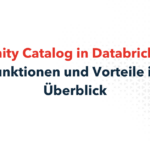The total amount of data consumed globally is increasing rapidly and projected to grow to more than 180 zettabytes in the next few years. Following this big data boom, visual analytics keeps growing as field of information, as it supports the final reader to better understand the information being displayed, easily identify patterns and get actionable insights and data-driven decisions. Humans are better at quickly processing visual information than if the information is displayed in a million row data set.
A practical example are the dashboards in the business world, which enable leaders in their decision-making processes by providing friendly and interactive charts. However, as a data visualisation consultant, it’s easy to spot several cases in most of our customers, in which their dashboards are not user-friendly nor target to a broader audience, excluding in most cases people with any kind visual impairment or colorblindness.
Here, our experts give you some key hints on how to make your dashboards even more accessible to your audience:
1️⃣ Use the international standards (WCAG-2.0)
Ever heard of WCAG? In a nutshell, every digital content needs to follow some rules concerning accessibility. So as published by the W3C, the WCAG (Web Content Accessibility Guidelines) is an international set of guidelines that defines what makes a site accessible. Developers, designers and accessibility experts from all over the world rely on these rules as a guidance for making digital content even more accessible. Basically the content should follow 4 principles, known with the acronym POUR:
-
Perceivable: communication relies on the senses: all users should have a similar experience regardless of ability. Your digital content or dashboard needs to transmit the information in an easy way for users to see and perceive it.
-
Operable: users should be able to operate the content by having different ways to navigate throught it, either using the keyboard, a mouse or an assistive device. It can’t demand an interaction that a user is not capable of executing.
-
Understandable: information must be clear and dashboards needs to be readable and predictable. Users needs to understand how to use and navigate it.
-
Robust: Content needs to be robust enough robust to be used by a variety of technologies, whether that’s different browsers or assistive technology.
2️⃣ Apply design concepts
Two of key concepts to apply to your visual information are the pre-attentives attributes and the Gestalt Principles:
-
The pre-attentives attributes are visual cues, which our brain can process automatically with sensory memory, notice, and interpret quickly and without special effort. A designer could strategically use these attributes on a dashboard development to guide users’ attention to the most important and relevant information, just by playing for example with the color, thickness of lines, presence of data marker and labels.
Pre-attentive attributtes (Image Source: Tableau) -
Gestalt Principles: the usage of an appealing aesthetics can be easier perceived by people and hence improve the understanding of the information. The human brain tries to simplify and order complex images made up of many elements by subconsciously arranging the parts into an organized system. Basically, our brains are designed to recognize patterns to better understand our environment. As exemplified by the image below, there are 6 principles commonly associated with the Gestalt theory. Those elements can also be explored during the dashboard development:
-
Closure
-
Proximity
-
Continuation
-
Similarity
-
Figure
-
Simmetry
3️⃣ Use and explore facilitating elements
The strategic usage of some elements can enrich a dashboard aesthetics in a way to make it more accessible than you image, for example:
-
Audience: know beforehanbd who is your target audience before creating a dashboard. C-level consumers are much different than Managers when interacting with the information for example
-
Colors: avoiding using green and red color to categorize dimension, as some people can’t differentiate it well. Instead, choose a color-blind palle palette tool, which lets you see how accessible your colors are to viewers who are colorblind.
-
Font: some fonts are easier to read than others, so the right choice could highly help to transmit the message across. One of the most widely available and also considered acessible fonts are: Arial, Calibri, Helvetica, Tahoma and Verdana. What many people don’t know is that some fonts can be inaccessible to disabled people, particularly those with a visual impairment or a learning disability such as dyslexia. For that there is a specific font called ‘Dyslexie’. The font size also matters: avoid using label or title smaller than size 9.
-
Language: if possible, use the language which most of your users will be able to understand.
If you need a Training or our Tableau Experts support to have a look at your dashboard and double-check if they are accessible, feel free to contact us at: info@areto.de
If you want to know more about this topic, you can also visit our recommendations below:








